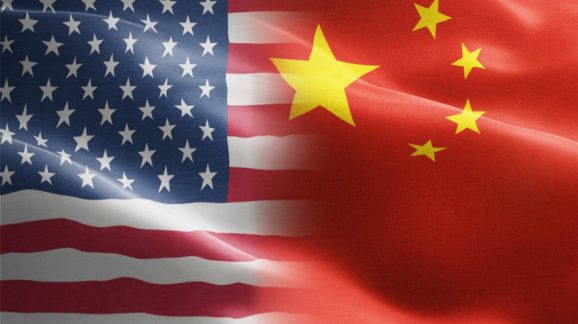Phase One Trade Agreement with China: Tariff Stability, at the Cost of Managed Trade

 The newly signed Phase One of a trade deal with China has enormous value as damage control against further tariffs, but it comes at a cost. The Trump administration has more than doubled total U.S. tariffs in its first three years, and other countries, including China, have responded in kind. Phase One’s signing hopefully marks an end to a tariff-first trade policy and its unpredictable implementation.
The newly signed Phase One of a trade deal with China has enormous value as damage control against further tariffs, but it comes at a cost. The Trump administration has more than doubled total U.S. tariffs in its first three years, and other countries, including China, have responded in kind. Phase One’s signing hopefully marks an end to a tariff-first trade policy and its unpredictable implementation.
But a ceasefire is not a victory. Massive tariffs put in place less than two years ago will remain in place, and risk becoming normalized. American consumers and businesses will still pay tariffs on 40 percent of Chinese imports that were mostly tariff-free just a few years ago. The Trump tariffs against Chinese goods should have been entirely repealed as part of the agreement, but were not.
Congress has the power to repeal the remaining tariffs and protect against further increases, and should do so immediately. There is already proposed legislation to move President Trump’s Section 232 tariff-making power back to Congress, where all taxing power properly belongs. More substantive engagement with China would involve rejoining the Trans-Pacific Partnership, which is continuing along without U.S. involvement, and using the World Trade Organization’s dispute resolution system, where the U.S. has an 85 percent success rate and a long track record of successfully encouraging reform.
Another cost of Phase One’s stability is transparency. Many terms of the now-signed agreement are still not public. Other provisions are vague. The Chinese government has a lot of work to do before it can be considered a good-faith actor in world trade. Needed reforms range from recognizing its people’s human, political, and economic rights to ending state-approved theft of technology and intellectual property. Beijing also needs to stop its self-harming policies of subsidizing private businesses and insisting on state ownership or control of nominally private enterprises. It will be difficult to hold Chinese leadership accountable to today’s agreement if nobody knows what it is in it, or if its broadly worded provisions prove unenforceable.
Given Beijing’s aversion to liberalizing reforms, this is important. For example, one section addresses forced technology transfers. “However,” The Wall Street Journal notes, “the section doesn’t require China to change any law or regulation to fulfill its obligations.” As a result, none will likely be enacted. That vagueness may have been Beijing’s condition for signing an agreement the Trump administration badly wants for short-term political reasons. In short, Trump may have gotten played like a fiddle. Whatever policy action China takes on technology transfers will now have a patina of legitimacy from the signed agreement. This is a poor political strategy from the U.S. side.
From a philosophical standpoint, the agreement confirms the Trump administration’s belief in managed trade, rather than free trade. It attempts to dictate the buying and selling of agricultural products, and on what terms private businesses may do business with each other. China’s biggest obstacle to sustained future growth is its government’s insistence on micromanaging the economy. President Trump apparently wishes similar obstacles on the U.S. economy.
Finally, the agreement also sits upon bad economics. Specifically, it was largely driven by Trump and his adviser Peter Navarro’s trade deficit ideology. Economists argue that trade deficits have no bearing on economic health, and should not be a policy consideration. For example, just about everyone maintains an ongoing trade deficit with their local grocery stores. The relationship is mutually beneficial, and indefinitely sustainable. Similarly, almost all employers run ongoing trade deficits with their employees. For example, CEI buys my services as a policy analyst, yet I never buy anything from CEI. Even so, CEI’s trade deficit with me is both mutually beneficial and sustainable. At a national scale, trade deficits are an accounting measure, and that’s it. Its number, whether positive or negative, or large or small, is the sum of individual decisions people make on purpose, and to their benefit. The Trump administration’s China policy, including Phase One, is instead driven by long-discredited mercantilist ideas about trade deficits that were last in vogue in the 17th century.
Moreover, dollars sent abroad from buying imports eventually return to the U.S. in the form of direct foreign investment. Those dollars also fund the trillions of dollars of government debt both parties have excelled in creating. When Peter Navarro simultaneously complains of a large trade deficit while bragging about growing direct foreign investment, he is being intellectually inconsistent. Much of the Trump trade agenda, including the Phase One agreement with China, rests on this inconsistency.
Phase One’s tariff ceasefire is a major benefit, but trade barriers against China remain higher on net than before the Trump administration took office. Any agreement built on such a mistaken intellectual foundation will likely not work as its drafters intended—especially when the administration’s short-term need for a marketable win takes precedence over sound long-term policy and the time-tested results of free trade.
(This blog post was updated on January 16, 2020.)